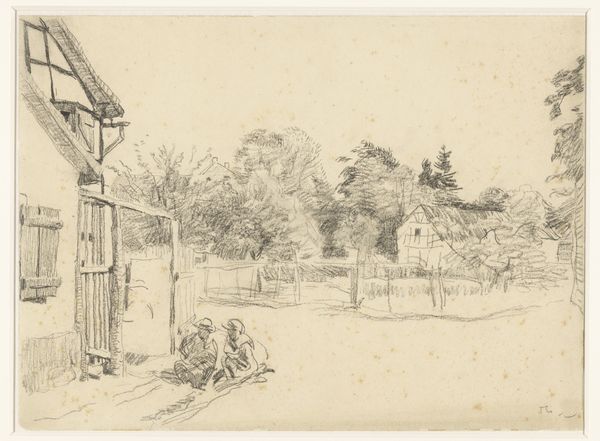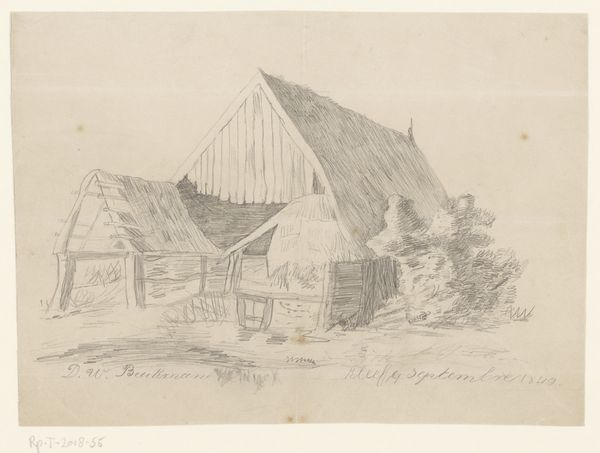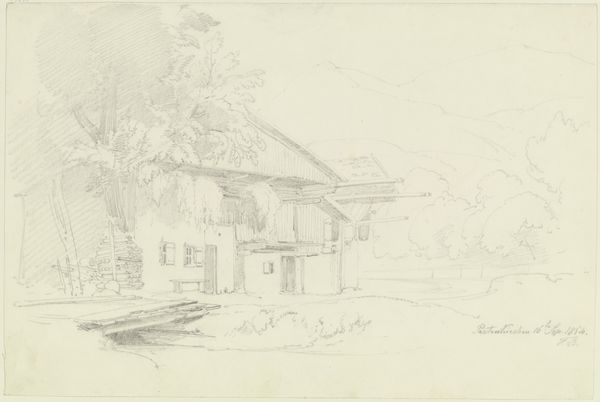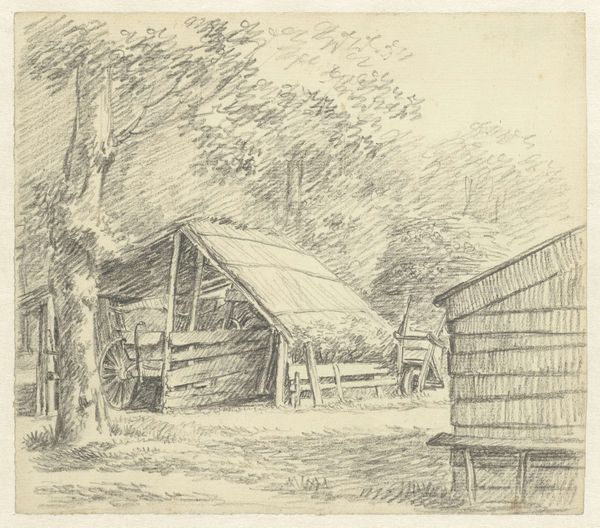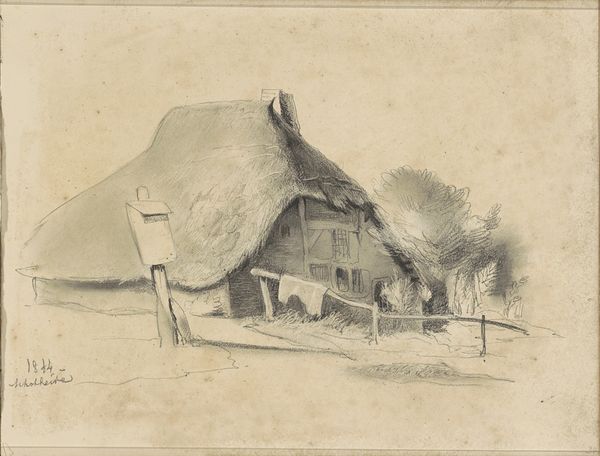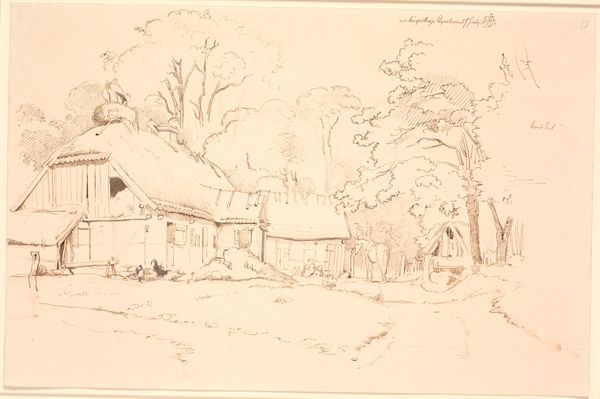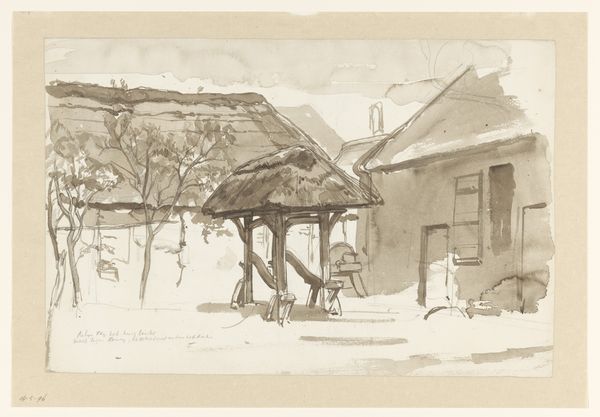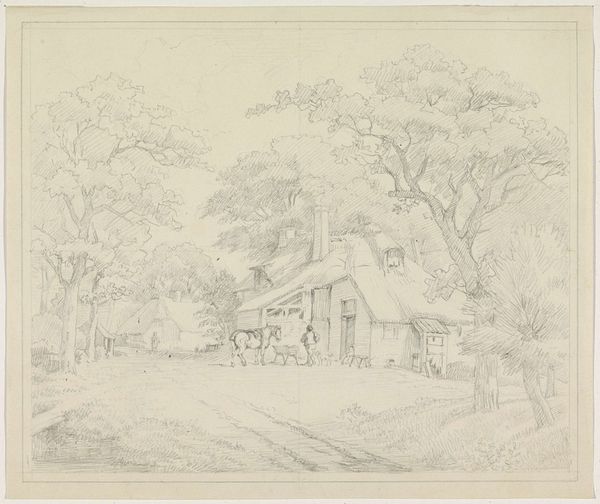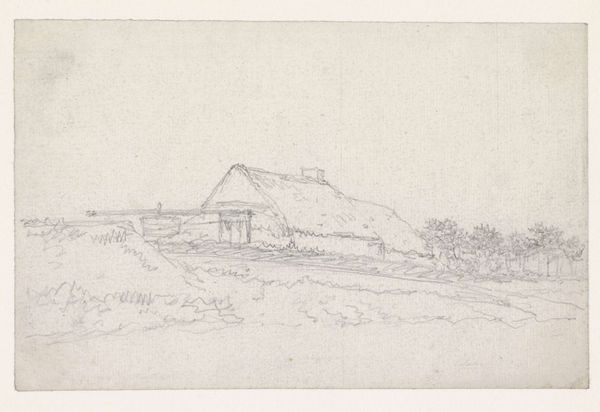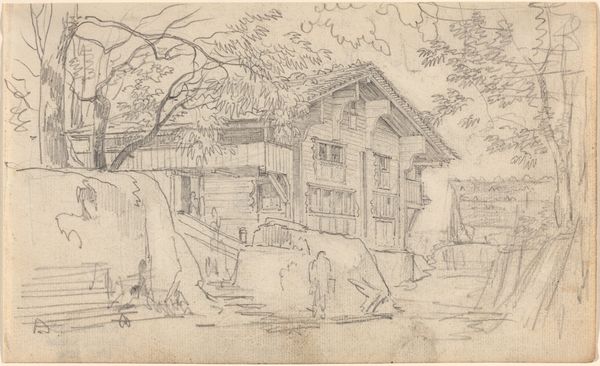
drawing, paper, ink, pencil, architecture
#
drawing
#
16_19th-century
#
landscape
#
paper
#
ink
#
pencil
#
architecture
Copyright: Public Domain
Otto Scholderer rendered this drawing of a farmstead with grove using graphite. It is an intimate glimpse into rural life and could tell us much about the relationship between artistic production and the social conditions of 19th-century Germany. The scene emphasizes the simplicity and naturalness of country living. Consider how Scholderer uses light and shadow to create depth, guiding our eyes through the farm buildings and into the surrounding grove. The rustic fences and thatched roofs evoke a sense of timelessness, perhaps romanticizing the agrarian lifestyle amidst Germany's industrial transformation. To fully grasp the social dimensions of this work, it’s important to research the cultural and economic context in which it was made. Agricultural practices, class structure, and even folklore could have influenced Scholderer's choices. By studying these resources, we can better understand the role of art in shaping our understanding of society. The meaning of art hinges on its social and institutional context.
Comments
No comments
Be the first to comment and join the conversation on the ultimate creative platform.
